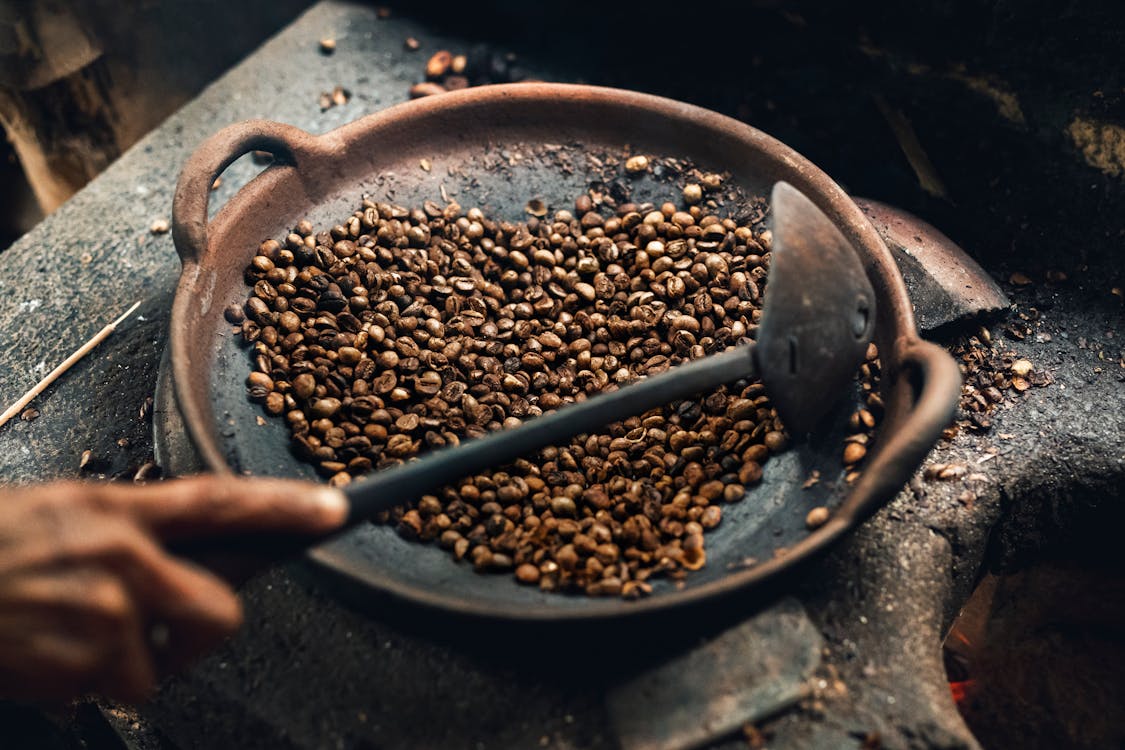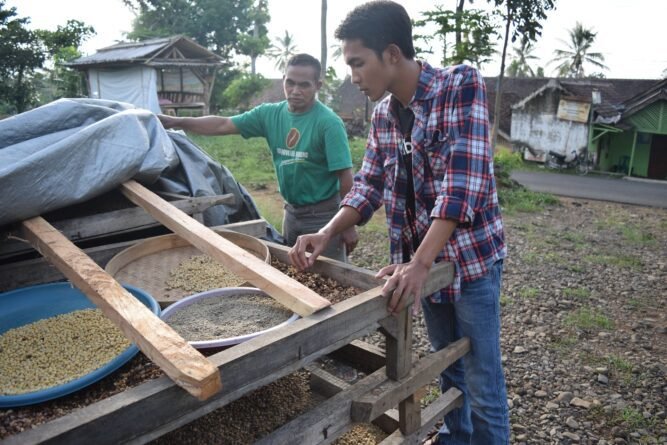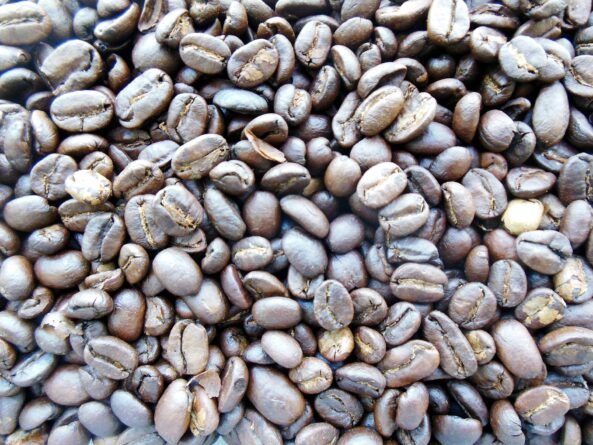Kopi Luwak Coffee Recipe, Benefits, and Drawbacks.
Coffee Queries is reader-supported. When you buy through links on our website, we may earn an affiliate commission. Learn More
Coffee is a drink that has been around for hundreds of years. It comes in a wide range of flavors to choose from. However, there is one type of coffee that stands out among the rest: the Kopi Luwak coffee.
The Kopi Luwak coffee is prepared from the coffee beans found in the Asian Palm Civet cat’s feces. Kopi Luwak coffee is one of the world’s most expensive coffee. It can cost anywhere from $35 to $100 per cup.
History Of Kopi Luwak

Kopi Luwak Coffee was first introduced in the late 1600s when a Dutch governor of India, Anthony Van Diemen (1636-45) shipped the first crop of Arabica Coffee to Dutch East Indies now known as Indonesia.
By 1711, Indonesia became widely popular for the cultivation of coffee. Due to the Java War (1825 – 1830) and Padri War (1803 – 1837), Dutch finances were in danger of becoming despondent. To cover their loss, the Dutch created the “Cultivation System” which would exploit the Indonesian resources.
Native employees of a Dutch plantation were not allowed to eat from the fruit of their labor. However, they soon began to notice Palm civet cats also ate the coffee cherries that the people were gathering, and the coffee beans emerged in their feces, apparently untouched.
Coffee was brewed by the natives after the beans had been washed and roasted. The plantation owners eventually found out about the superiority of the local brew and decided to give it a try.
The Nutritional Content of Kopi Luwak Coffee
Per serving (20g of coffee)
| Calories | 110kcal |
| Fat | 3g |
| Protein | 1g |
| Carbohydrate | 15g |
| Sodium | 30mg |
| Cholesterol | 2mg |
| Sugar | 11g |
| Iron | 0.2mg |
| Dietary Fiber | 1g |
| Calcium | 10mg |
Easy Recipe for Kopi Luwak Coffee

Ingredients
2 Tablespoon Kopi Luwak Beans
3 cups of water for coffee
1 cup of water additional for boiling
Sugar (to taste)
Milk (to taste)
Method
Fill a kettle with 4 cups of water and bring it to a boil on medium heat. While the water is boiling, grind 2 tablespoons of Kopi Luwak beans coarsely. Preheat your Press Pot by pouring the hot water in it. Dump the water out and add your ground coffee beans. Now pour in half of the boiled water again, over the grounds, and let the Kopi Luwak beans foam and swell.
After the foam settles down, pour the rest of the boiled water in the Press Pot and wait for 4 minutes. Set your plunger on top of the brewing grounds and after the 4-minute mark, slowly depress the plunger. Your coffee is ready to be poured in cups and enjoy!
Pro Tip – Use the best possible brewer: The reheated coffee usually loses its flavor and aroma. It’s important to use the best brewer available to ensure that you get the finest cup of Kopi Luwak possible.
How Is Kopi Luwak Coffee Processed in a Cat?
The digestive enzymes such as lipases, proteases, and amylases in the Civet cat’s digestive tract are responsible for the unique flavor of Kopi Luwak coffee. The Civet cats excrete coffee beans and are then collected by the workers. They are rinsed many times to guarantee that the beans are free of excrement and any other hazardous microorganisms.
Beans are then soaked in water and afterward dried in the sun to remove any staleness. The beans’ outer skin is peeled off and crushed in a mortar and pestle. The pounding does not affect the taste or texture of the beans. Afterward, only the finest coffee beans are kept and the damaged ones are thrown away. The Kopi Luwak coffee beans are then ready to be used.
How Does the Kopi Luwak Coffee Taste?

The beans that make up the Kopi Luwak coffee have less protein than those in other varieties of coffee, making the drink smoother and more enjoyable. The resulting beverage has an earthy flavor due to its higher fat content. While this isn’t an ideal coffee for everyone, if you have the chance, try a cup to see how delicious it is.
Kopi Luwak beans have a distinct look compared to Columbian coffee beans. Red and yellow tones are known to be more prevalent in Kopi Luwak beans. In addition, they have less pitting on their surfaces than the Colombian beans. This indicates that the civets’ digestive systems have worn them down.
The feces of the cat beans are collected by hand and maybe roasted or brewed. Furthermore, the taste may differ slightly from batch to batch. This is due to the reason that the beans come from civets. They have gone through the digestive tracts and may get infused with other food that the cats may eat.
Certification of Kopi Luwak Beans

To assist customers in picking coffee that wild civets have processed, several certification systems are in place.
Both the Rainforest Alliance and UTZ have systems in place to safeguard the civet cat’s well-being. They also want to assist farmers in obtaining fair pricing for their goods via various methods.
These initiatives do not go far enough in preventing the use of caged civets in the production of “ethical” Kopi Luwak coffee. The reason for this is that they need a one-time examination.
To have an official examine their plantation, the producers must pay a charge. If the official does not uncover any caged civets during the examination, the coffee will be certified as “wild.”
PETA (People for the Ethical Treatment of Animals) investigators informed one farmer that growing Kopi Luwak coffee purely from wild sources was quite difficult. In addition, he stated it was typical for Kopi Luwak to be mislabeled.
However, there is still work to be done. Higher certification costs may allow for random inspections to guarantee cage-free civet cats aren’t being used. Farmers whose certificates have been proven to include confined animals may have them withdrawn. They might be fined or even barred from selling if they don’t comply.
The good news is that these conditions have a genuine chance of improving. The Rainforest Alliance and UTZ, the two major certification bodies, united in January 2018. In 2019, they aimed to launch a single new certification course, and in 2020 Rainforest Alliance created a certification program to provide “a Path to More Resilient and Inclusive Agricultural Practices” and help source ethically processed Kopi Luwak coffee beans.
Benefits of Kopi Luwak Coffee
While Kopi Luwak coffee is considered to be the world’s most expensive coffee, it also provides certain health benefits that other types of coffees may be lacking. Some of those benefits are mentioned below.
Improves mood
No doubt, civet coffee is a tasty beverage. It is a nutritious beverage that contains caffeine to enhance cognitive function which results in a better mood. One to three cups of Kopi Luwak coffee a day is advised to achieve optimum results.
Diabetes in control
Another advantage of civet cat coffee is its ability to keep blood sugar levels under control. Patients with Type 2 Diabetes may benefit from civet coffee’s low acidic content at this stage. Studies show that Kopi Luwak coffee has also been proven to lower diabetes risk by 50% infrequent drinkers as examined in the International Journal of Food Science, published in 2021.
Source of Antioxidants and Good Acids
In terms of health benefits, civet coffee’s antioxidant content is outstanding. Antioxidants are well-known for their ability to keep harmful bacteria, viruses, and diseases at bay. As a result, it combats the inflammation that causes a wide range of chronic illnesses.
Additionally, the antioxidants in Kopi Luwak coffee help protect against the damaging effects of free radicals, which are a major source of oxidative stress. This coffee is also full of good acids. It contains malic and citric acid which helps boost energy and lower the body’s acidic level respectively.
Sharpens your memory
Kopi Luwak coffee contains caffeine, which enhances brain function as proved by this medical study conducted in 2016. Short-term memory and focus are also known to be improved in function by caffeine as well. Thus, drinking coffee daily may help protect your brain from diseases like Alzheimer’s and dementia.
Makes the teeth strong
Kopi Luwak coffee is an excellent choice if you’re dealing with oral health issues in this situation. It will keep the mouth free of microorganisms as well as keep your teeth healthy by preventing cavities.

Drawbacks of Kopi Luwak Coffee
Even though Kopi Luwak Coffee is a healthy alternative to other coffees, the time and the expense of farming ethical Kopi Luwak beans is high which is why you may consider giving up this coffee. Some of the issues that may arise when you choose Kopi Luwak Coffee beans are mentioned below.
Fake products
The price of Kopi Luwak is high, there is a good chance that the beans available to the customers may be fake. According to one government publication article, up to 80% of Kopi Luwak coffee beans in the global market are fake.
Commercial cultivation, which is the most accessible way of cultivating coffee beans, yields a subpar product, according to experts.
Cruel act towards animals

In their natural habitat, Kopi Luwak is found in the wild to eat insects, seeds, and fruit – including papaya, pineapples, and coffee. Commercial Kopi Luwak farms use coffee farming procedures to feed their animals just coffee beans to increase productivity. Additionally, limiting Kofi Luwak’s diet to just coffee cherries, leads to nutritional inadequacies, leading to health issues.
According to the findings of a 2016 study conducted by Oxford University and the London-based World Animal Protection, approximately 50 wild Civet cats besides other wild animals, were imprisoned on the Indonesian island of Bali. The investigation stated that caged Luwaks lived in squalid circumstances and had harmful effects on their health.
Finding certified coffee is tough

There is a high probability that the coffee you purchase comes from a caged plantation rather than an operation using wild Luwak beans. In 2013, a BBC undercover investigation revealed how coffee from caged Luwaks held in inhumane conditions is labeled as “wild Luwak coffee” in Europe.
However, good news came in 2014 when the Sustainable Agriculture Network (SAN), barred caged Luwaks from producing coffee.
Conclusion
Despite its high price, Kopi Luwak coffee is a wonderful coffee to enjoy at least once in a lifetime. It has been marketed as a gourmet coffee for decades and is sold in high-end coffee shops in the Philippines. It is also available in the United States and China, and Southeast Asia. Its popularity has expanded in recent years, and it is now stocked in luxury retail stores and supermarkets.






